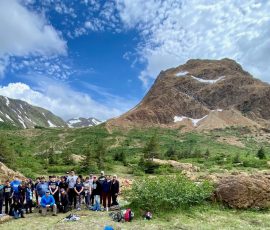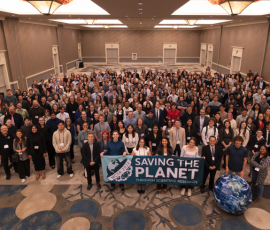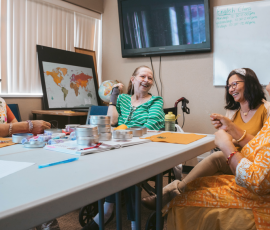In June, we were pleased to sit down with Lorin Schmit Dunlop, Senior Director of Arts, Culture, & Education at the Murdock Trust, for a conversation about this area of the Trust’s work. This was one of seven sessions for our virtual Founder’s Day celebration where we got to hear about the Trust’s work across our region, learn more about recent organizational shifts, and hear from leadership.
Because we were not able to address all audience questions live, we also wanted to follow up and respond to those we missed in the Q&A section below.
Q&As
These were questions registrants submitted before the session, or that attendees submitted during the session, that we didn’t have time to answer live. We appreciate your curiosity and were pleased to follow up with Lorin to answer some of these questions.
The arts are not nearly prioritized enough in educational curriculum. In your experience, how can we foster an appreciation of the arts, not just for students but for the decision makers?
I think your question is spot-on. Much of the opportunity for change here lies with decision-makers, particularly school administrators, parents, and school boards. After two decades of disinvestment in arts education, we have a generation of decision-makers that did not have an opportunity for a transformative arts experience in their education. This is part of a greater culture that does not realize how integral the arts are in education, though there have been some wonderful state-based studies on the benefits of the arts and others on the economic impact of the arts. The data is out there that the arts matter, but we need to create more spaces for that head knowledge to get to the hearts of those leading our schools.
From my experience, we would benefit from more public awareness of high-quality arts education programming. If we have more people experiencing the results (arts shows, school performances, etc.), we have more people equipped to advocate for arts programming. Decision-makers need to see it in action and begin to experience the transformative power of the arts for themselves so it begins to be re-prioritized in the spaces where they have decision-making influence.
I’ll also take this opportunity to shout out the nonprofit organizations creating spaces for students to engage with the arts during after-school hours and summers. They have been steadfast in finding a way to make sure artistic encounters are available to youth of all backgrounds. Thank you to all those organizations – you know who you are!
I’d like to know more about the kinds of projects Murdock wants to fund in the name of “fostering curiosity about the natural world”?
The Trust is pleased to support projects and organizations that are creative in their approach to demonstrating the beauty and science that exist in the natural world. We think of zoos, aquariums, and gardens as nature’s classrooms, where people of all ages can learn about their environment and become more invested in caring for the world around them. The Trust has a long history of supporting these efforts, from aquarium expansion projects to make new space for public education, to capital improvements at botanical gardens to support outdoor education programs, to new exhibits at zoos to promote wildlife education and conservation. We are always eager to hear of top-priority projects that would build capacity in organizations doing this work and bring more people into the act of caring about and for our natural world.
Do you support programs that provide educational materials for the Hispanic community?
We believe strongly in the importance of making education accessible for all communities, and in doing that we have been thrilled to support several programs specifically aimed at strengthening educational resources and opportunities within the Hispanic community. I encourage you to look at our grant opportunities and funding priorities for more information.
In your experience, has technology been a threat to arts organizations? Or have organizations found ways to utilize it well in service of their mission?
We have seen technology be a wonderful asset to arts and culture organizations when they are thoughtful and strategic in its use. For example, theater groups were able to livestream their performances during the pandemic. Historical societies have digitized their offerings and delivered them in new ways. Many types of organizations have found digital marketing an effective way to reach new audiences and bring more people into their work. The Trust has been pleased to support many projects that strengthen organizations’ use of technology in strategic service of their mission. At the same time, we know that these technological successes have made it hard to keep a culture of in-person arts experiences, which can translate to lower earned income for arts organizations. The Trust is interested in creative uses and solutions for technology’s place in the arts sector, and in fostering conversations about these tensions and opportunities.
Learn more about the Trust’s work supporting Arts, Culture, & Education on this webpage or in this vision blog.
Watch the full recording and find the topics that interest you most using the timestamps below.
The Conversation
01:36: Why the Trust funds arts, culture, and education
02:42: How the Trust works in the arts community
05:06: How the Trust works with cultural institutions
06:55: The Trust’s investment in education
08:43: Connection between arts, culture, and education
09:16: Educating the whole person
11:32: What we hope to learn in our sectoral model
14:04: Technological innovations emerging from organizations
15:46: Challenges museums are facing right now
18:30: Positive outcomes from COVID innovations
20:28: Thank you to arts, culture, education nonprofits







